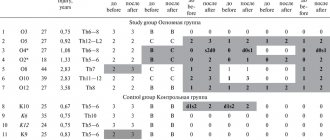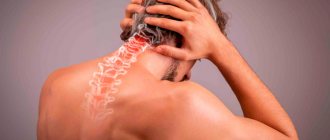In our age of overabundance of information, stress and crazy speeds, the problem of mental health, or more precisely, ill-health, is becoming almost the most important.
As you know, mental health, the same “healthy spirit” that ancient healers loved to talk about, is an integral component of health in general. Alas, the features of modern life make us extremely vulnerable to various mental disorders. And the disease does not distinguish whether the person in front of it is young or old, man or woman.
In terms of prevalence, mental health disorders are now among the leaders after cardiovascular diseases and cancer. According to WHO, more than 560 million people on the planet already suffer from various mental illnesses. And almost every second person is in danger of contracting a mental illness during their lifetime.
Very often, serious psychoneurological diseases such as neurosis and psychosis .
1 Diagnosis and treatment of neurosis
2 Diagnosis and treatment of neurosis
3 Diagnosis and treatment of neurosis
Is neurosis a mental illness, a neurotic disorder or a borderline state?
First of all, it should be said that the term neurosis is practically not used in foreign, especially American, psychiatric practice. Similar trends are also observed in domestic psychiatry. But among the people, the concept of neurosis does not lose its relevance and it is understood as different types of negative mental manifestations. Statistics show that 20-30% of the urban and 10-15% of the rural population have certain types of neuroses. About a quarter of all mental disorders are neurotic. In women and children they are more severe and develop more often than in men. In addition, women are more susceptible to the hysterical form of neurosis. From a scientific point of view, neurosis (psychoneurosis or neurotic disorder) is a group of neuropsychic disorders that are psychogenic in nature, reversible (functional) in nature and not accompanied by fundamental changes in the psyche. The psychogenic nature of neurotic conditions implies that the main causes of neuroses are internal or external factors that can cause psychological trauma, stress, emotional or intellectual overstrain. The term neurosis itself was introduced into medical practice back in 1776 by William Cullen, a doctor from Scotland. By the way, in a broad sense, neurosis is understood as functional disorders of higher nervous activity (HNA) and is used not only in medicine, but also in biology. It turned out that not only humans, but also higher animals can suffer from neuroses. According to the International Classification of Diseases (ICD-10), the category of mental disorders includes neurotic disorders associated with stress, as well as somatoform ones. The traditional division into neuroses and psychoses is not provided for in the ICD, but nevertheless is quite actively used in modern medical practice. The differences between neuroses and psychoses are that: • With neuroses, people are aware of their condition, are critical of it and retain the ability to control their behavior, i.e. a person is not divorced from reality. In psychosis, there is a disconnect from reality, delusions and various types of hallucinations. Between them there is a borderline state in the form of some disorganization of the psyche. All these divisions are arbitrary and sometimes it is quite difficult to distinguish neurosis from a borderline state. • Neurotic disorders do not have a physiological cause, but may have symptoms of a somatic illness and psychological manifestations that are painful for a person. But at the same time, unlike psychoses, psychotic symptoms and progressive personality changes towards degradation and dementia are not observed. • The root cause of neurosis is always a psychological factor. These can be external reasons (conflicts at work, business failures, family dramas, troubles with children, news of a serious illness, judicial review, etc.), as well as internal, hidden in the subconscious conflicts between a person’s needs and himself imposed bans on their satisfaction. In addition, factors predisposing to the development of neuroses may be: • Mental – character traits, conditions of upbringing and personality formation, its relationship with society, inflated levels of self-esteem and expectations. • Biological – disturbances in the functions and relationships of various neurotransmitters that increase the vulnerability of the individual to the effects of stress and psychological trauma. May be genetically determined or acquired.
Advantages of treatment at the clinic of JSC "Medicine"
The course of neurosis does not lead to disability, but often disrupts the full life of the patient and people close to him. In modern medicine, there are 3 stages of development of neuroses. The later the stage, the more difficult the treatment; this must be clearly understood. Medical specialists (academician Roitberg’s clinic) successfully treat neuroses in adults and children at any stage of complexity.
Remember: it is impossible to cure neurosis on your own, but in the conditions of the clinic of JSC “Medicine” it is absolutely possible to recover completely! Leading specialists of domestic medicine, including academicians, professors, doctors and candidates of medical sciences, conduct receptions here. Modern material and technical base, coupled with the professionalism of doctors, allows patients with neuroses to recover in the shortest possible time!
How are neurosis, symptoms and signs of its main varieties classified?
The following types of neuroses are differentiated: • Anxiety disorders and phobias in the form of increased anxiety, panic attacks and unreasonable fears (phobias). In the clinic, this type of neurosis is divided into three stages. At the 1st stage, fear arises only in a truly dangerous situation, when the patient is afraid of something, at the 2nd stage - when thinking about the possibility of being in a similar situation again, at the 3rd stage - even when verbally mentioning phenomena, somehow associated with a phobia. The symptoms are dominated by various fears. This may be a fear of contracting some disease (for example, cancer, syphilophobia or speedophobia), which can ultimately lead to hypochondria. Phobias such as claustrophobia (fear of enclosed spaces), agoraphobia (fear of open spaces and crowds), etc. are quite common. • Obsessive-compulsive disorders, manifested in obsessive actions, thoughts, memories and aspirations, perceived by a person as unpleasant and alien. Patients are not able to cope with them on their own. Persons prone to suspiciousness, anxiety and introspection (reflection) are susceptible to this type of neurosis. Obsessive thoughts can manifest themselves in the form of counting steps, passing cars of a certain color, repeated attempts to answer meaningless questions, for example, why there are so many letters in one word, and more or less in another. Particularly difficult to perceive is the obsessive desire to do something shameful and unacceptable, for example, to undress naked in a public place, swear obscenely, or kill a loved one. Obsessive actions (compulsions) can reach the point of absurdity - washing hands up to 100 times a day, returning home multiple times to check that household appliances, gas, or doors are closed. There is also the performance of ritual actions before certain events (look in the mirror a certain number of times before leaving the house, jump or pull your ear, etc.). Only after such rituals can the patient leave home with confidence that nothing unpleasant or terrible will happen to him. • Hysterical reactions, otherwise conversion disorders, accompanied by changes in sensory sensations, disturbances in motor and autonomic reactions, memory loss, etc. Women are more susceptible to hysteria. The signs of neurosis in women are so diverse and changeable that they can resemble many bodily ailments. Hysteria is often called the great malingerer. The predisposition to it is more pronounced in individuals with an overly labile or immature infantile psyche. Hysterical disorder is manifested by such signs as a constant desire to be the center of attention, to play the main role in the team and family, and to dominate others. Hysterics are also characterized by hyper-emotionality, mood swings, a tendency to exaggerate their own role, demonstrative behavior, and elements of theatricality. Those around them often get the impression that a hysterical person revels in his illness, advertises it in every possible way and uses it to attract attention. The extreme manifestation of hysteria is a hysterical seizure, reminiscent of an epileptic one. • Somatoform disorder, otherwise somatic distress disorder, associated with the manifestation of symptoms of a physical disease without the presence of the disease itself. Signs of neurosis in this case most often resemble symptoms of a particular disease. A peculiarity of this type of neurosis is the particular torment and excessive focus of the patient’s attention on somatic manifestations, aggravated by contact with medical workers, which cannot be persuaded either by the results of clinical and laboratory examinations or by medical reasoning. The patient is confident that he has a disease, is deaf to any counterarguments and constantly initiates new examinations, which are practically useless and often expensive. Moreover, the symptoms differ in duration and progressive variability. For example, vegetative-vascular dystonia may be replaced by hypertension, tachycardia may be complicated by arrhythmia, stomach pain may be accompanied by intestinal spasms, etc. Moreover, only one symptom is rarely present; multiplicity is usually characteristic, for example, migrating pain throughout the body, neurosis with dizziness, headaches, high or low blood pressure, tachy- or bradycardia. Autonomic dysfunction of the cardiovascular, respiratory and gastrointestinal systems is often observed. All this significantly reduces the quality of life of the patient himself and his immediate environment. In therapeutic practice, almost every fourth patient has complaints that are not confirmed by a clinical diagnosis. • Neurasthenia – a state of increased intellectual fatigue, headaches with mental stress, inability to completely relax and sleep disturbances. This condition deserves more detailed discussion due to its relevance and impact on mental activity and intellectual abilities.
What are the main signs of neurasthenia?
The symptoms of this condition are varied, but with a detailed clinical picture they are typical for most patients. The disorder develops in stages: • At the 1st stage, autonomic disorders are observed, among which tachycardia predominates even with light exertion, sweating, poor circulation in the extremities with coldness, as well as poor sleep and loss of appetite. The sensory reaction is significantly enhanced, especially the visual one, when a person is unable to tolerate even diffused light, closing the windows with thick curtains and staying in twilight. In addition, unexpected and sharp feelings of hunger may occur in response to the slightest appetizing smells and even innocent mentions of food. Often the extreme manifestations of increased sensitivity are severe headaches. • At the 2nd stage, sensorimotor disorders develop, the reaction to sensations from the internal organs increases. Increased sensitivity to temperature changes - severe chills in cool weather and increased sweating in hot weather. Noise in the ears, sensations of the work of one’s own heart and stomach, which a person normally does not feel and does not even think about. Signals from the body and its individual organs are so strong that they keep a person in constant tension, forcing him to react violently and anxiously to any changes on their part. • At the 3rd stage of neurasthenia, affective disorders with mood swings and an exaggerated response to even the most insignificant events join all this. People easily and quickly get offended, become whiny and irritable, every trifle or insignificant failure becomes a source of excitement and worry. For some, irritability develops into short temper, anger and resentment. In fact, there is an imbalance of neuropsychic and emotional processes, which leads to a decrease in intellectual abilities, concentration, understanding and memorization of abstract concepts.
Depending on the etiological factor, 2 variants of neurasthenic disorder are differentiated: • Neurosis of exhaustion of the nervous system, as a result of constant and significant overload. • Reactive neuroses, the cause of which is psychological trauma (acute or chronic). In addition, there are 2 forms of development of neurasthenia: • Hypersthenic with a predominance of irritability, increased sensitivity to external stimuli, muscle tension during neurosis, nervous tics and decreased attention. • Hyposthenic, which is characterized by rapid fatigue, a constant feeling of tiredness, decreased performance, lethargy and physical weakness. The neurasthenic state may be complicated by the addition of symptoms of other neurotic disorders. These can be hysterical reactions, obsessive fears and doubts, somatic manifestations, etc.
What are the most common signs of neuroses?
Among the mental symptoms, you should pay attention primarily to the following: • Emotional discomfort that occurs for no apparent reason. • Problematic communication with others. • Unpreparedness to make decisions. • Inadequacy of self-esteem with its overestimation or underestimation. • Frequent anxiety, a feeling of fear, anticipation of something unpleasant and scary, the development of phobias, the appearance of panic attacks. • Perversion of the system of values, aspirations, preferences, cynical attitude towards life and the environment. • Irritability and reduced resistance to stress. • Touchiness, tearfulness, increased vulnerability. • Obsession with traumatic circumstances. • Rapid fatigue due to intellectual stress, impaired memory, ability to concentrate. • Increased sensitivity to sudden changes in temperature, loud sounds, bright light. • Sleep disorders with difficulty falling asleep, night awakenings, superficial character, disturbing dreams, morning fatigue. A neurotic disorder may be indicated by physical symptoms of neurosis such as: • Pain of various localizations (headache, heart, gastrointestinal, muscle and joint) • Sudden changes in pressure. • Disorders of the vestibular apparatus with dizziness, imbalance, etc.: difficulty maintaining balance, dizziness. • Eating disorders, expressed in overeating or undereating, a sudden feeling of hunger with a quickly onset feeling of satiety. • Psychalgia (physical pain accompanying strong mental experiences, otherwise mental pain), increased concern for one’s own health, hypochondria. • Autonomic disorders - surges in blood pressure, tachycardia, cough, frequent urge to urinate, gastrointestinal dysfunction, sweating, chills, numbness and coldness of the extremities, etc. • Speech disorders in the form of stuttering. • Sexual dysfunction (decreased potency and libido) is rarely observed.
If neurosis is not treated in time, the symptoms intensify, and individual symptoms may become generalized. For example, pressure surges during stressful situations can turn into vegetative-vascular dystonia (otherwise neurocirculatory dystonia), associated with dysfunction of its sympathetic and parasympathetic departments and a violation of the neurohumoral regulation of the cardiovascular, respiratory system, intestinal motility, etc.
2.Causes of leg pain
There are several categories of problems that can cause leg pain, discomfort and the other symptoms listed above. Let's try to figure it out in more detail.
Firstly, it may be problems with the skin of the legs
. Symptoms and the diseases that cause them may be:
- If while walking you feel as if you are walking on stones or pebbles, it may be plantar warts on the lower part of your foot;
- Areas of dense and hard skin on the heels may appear due to calluses, blisters on the skin or engorgement of the skin due to uncomfortable shoes, walking barefoot;
- Redness, peeling of the skin, burning and itching between the toes or on the bottom of the leg are signs of foot fungus (mycosis). Another possible cause is dermatitis due to the shoes you wear;
- Red, swollen, and tender skin around the nail may be symptoms of an ingrown toenail or nail infection (paronychia);
- Redness, swelling of the feet, pain in the feet when walking or touching are signs of a possible bacterial infection. You can become infected in public showers, swimming pools and other similar institutions.
The toe joints are a very vulnerable area.
. And it is with the joints of the toes that there are more problems than with any other joints in the body.
- Big toe joint pain, redness, swelling and tenderness that suddenly appears in the big toe joint can be caused by gout. The same symptoms can appear due to infection;
- If you have a swelling or lump at the base of your big toe, it may be a bunion;
- A lump on the outside of the little finger may be due to bunion;
- Toe joint pain, stiffness, and swelling are common symptoms of bunions, arthritis, lupus, or gout.
Foot pain may appear in the front of the foot or in the heel.
- Sharp pain in the bottom of the heel can be caused by plantar fasciitis;
- Pain in the back of the heel or ankle are symptoms of Achilles tendinitis, or as it is also called, Achilles tendinitis;
- Pain that worsens before or after exercise but improves during exercise may be caused by a broken bone in the leg (usually a metatarsal);
- Small bone spurs under the heel bone that cause heel pain may be a heel spur;
- Pain in the midfoot occurs due to flat feet;
- Pain in the back of the heel or a lump in this area is a symptom of a type of bunion.
Many diseases can affect the nerves of the foot
, causing foot pain, numbness, tingling and burning.
- Foot pain, burning, tingling, or numbness between the toes, especially between the third and fourth toes, and the same sensation in the forefoot may occur due to swelling or thickening of the nerve in the forefoot;
- Pain, numbness, or tingling that starts in the back or buttocks and moves down the leg may be caused by sciatica due to a pinched nerve;
- Weakness and pain in the ankle, which is often accompanied by numbness, can begin due to a pinched nerve in the ankle (tarsal tunnel syndrome) or sciatica;
- Burning in the legs, numbness and loss of sensation appear due to poor blood circulation. This problem is more common among people with diabetes or peripheral artery disease.
As you can see, the causes of leg pain, pain in the feet, ankles, toes, and other causes of discomfort in the legs can be very different. Therefore, if you experience symptoms such as pain in the legs, swelling of the legs, cramps in the legs, burning sensation, numbness, tingling in the legs and toes, paleness or blueness of the legs, you need to consult a good doctor. A specialist will help determine the cause of discomfort in the legs and tell you how to deal with them.
Visit our Therapy page










